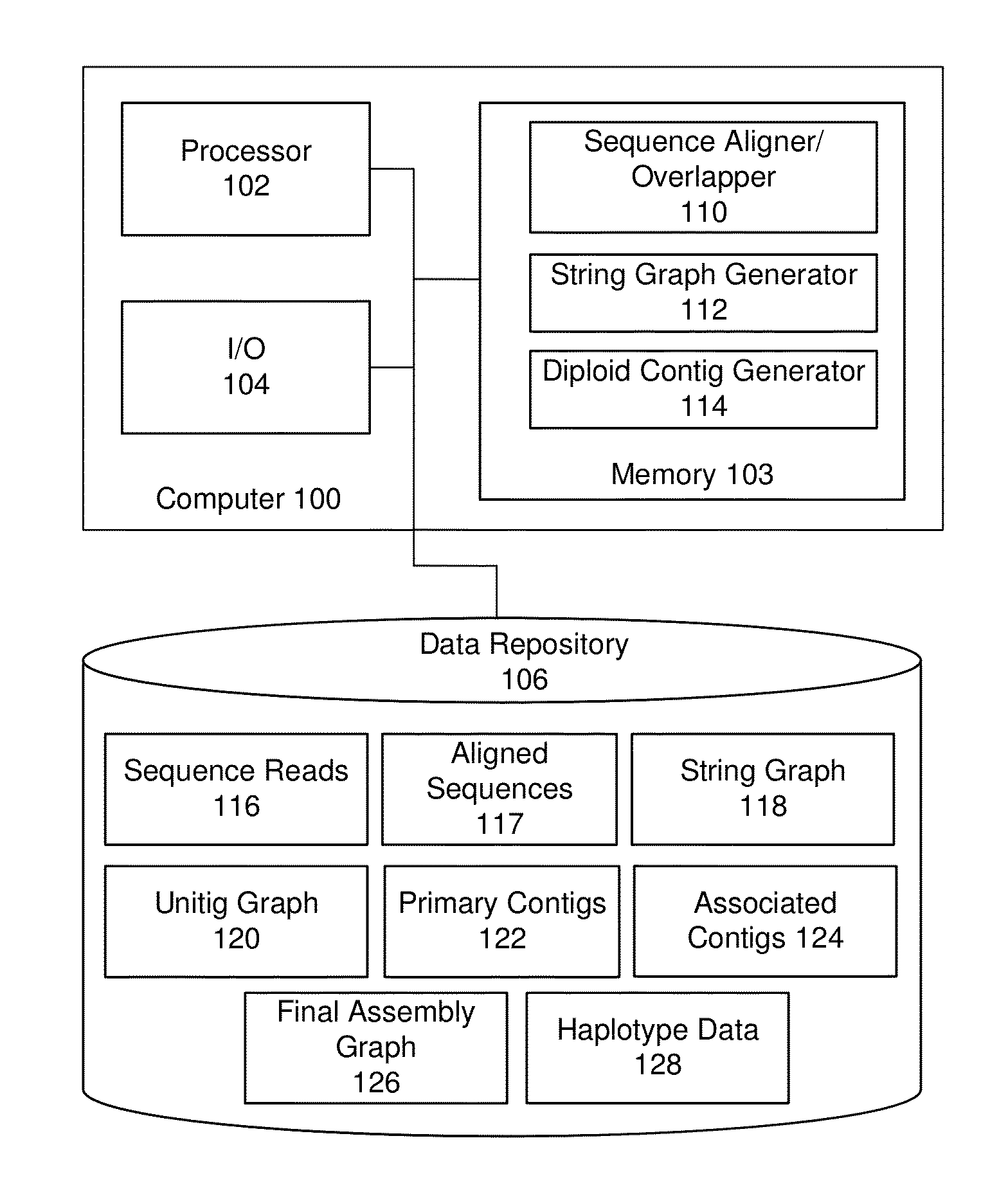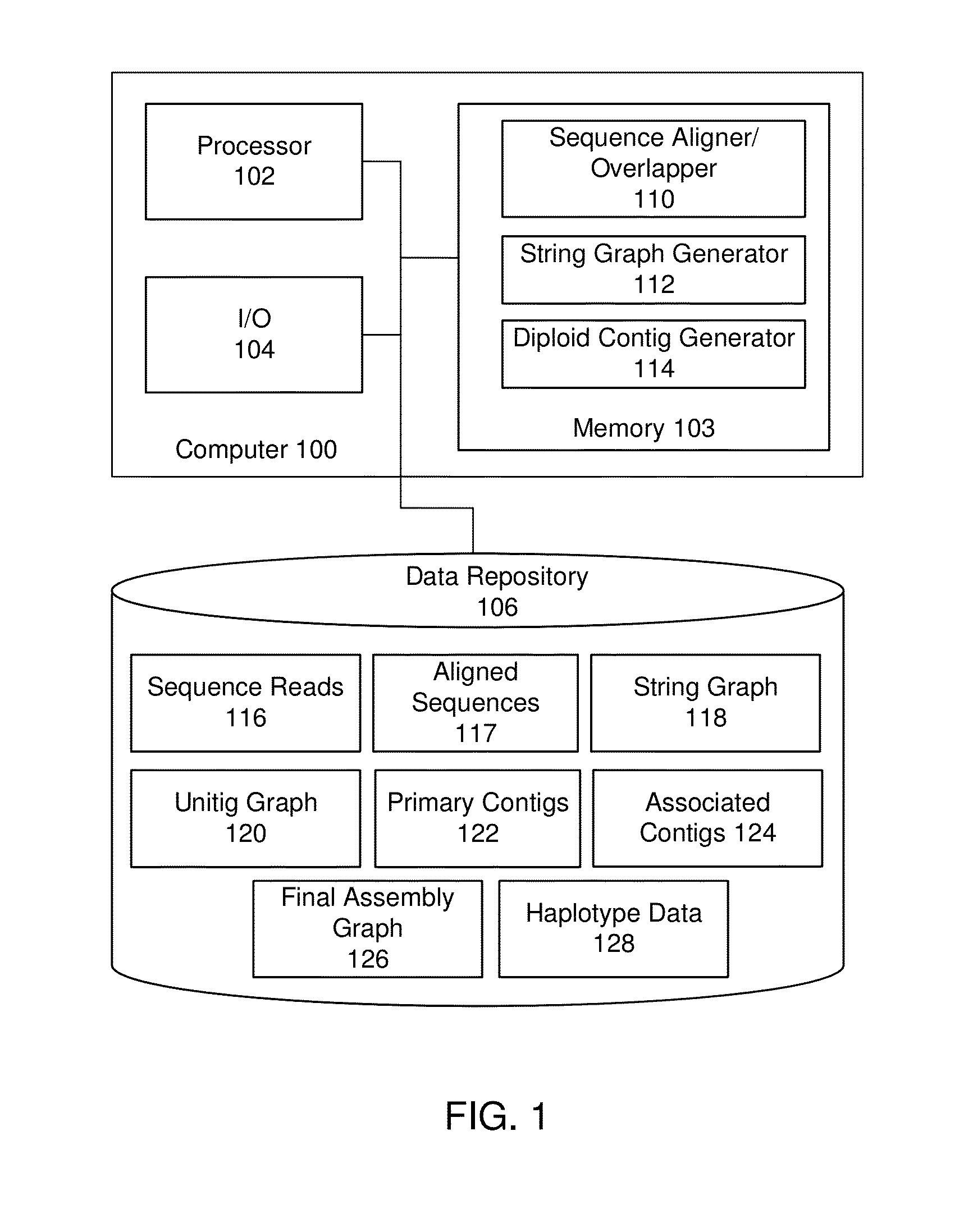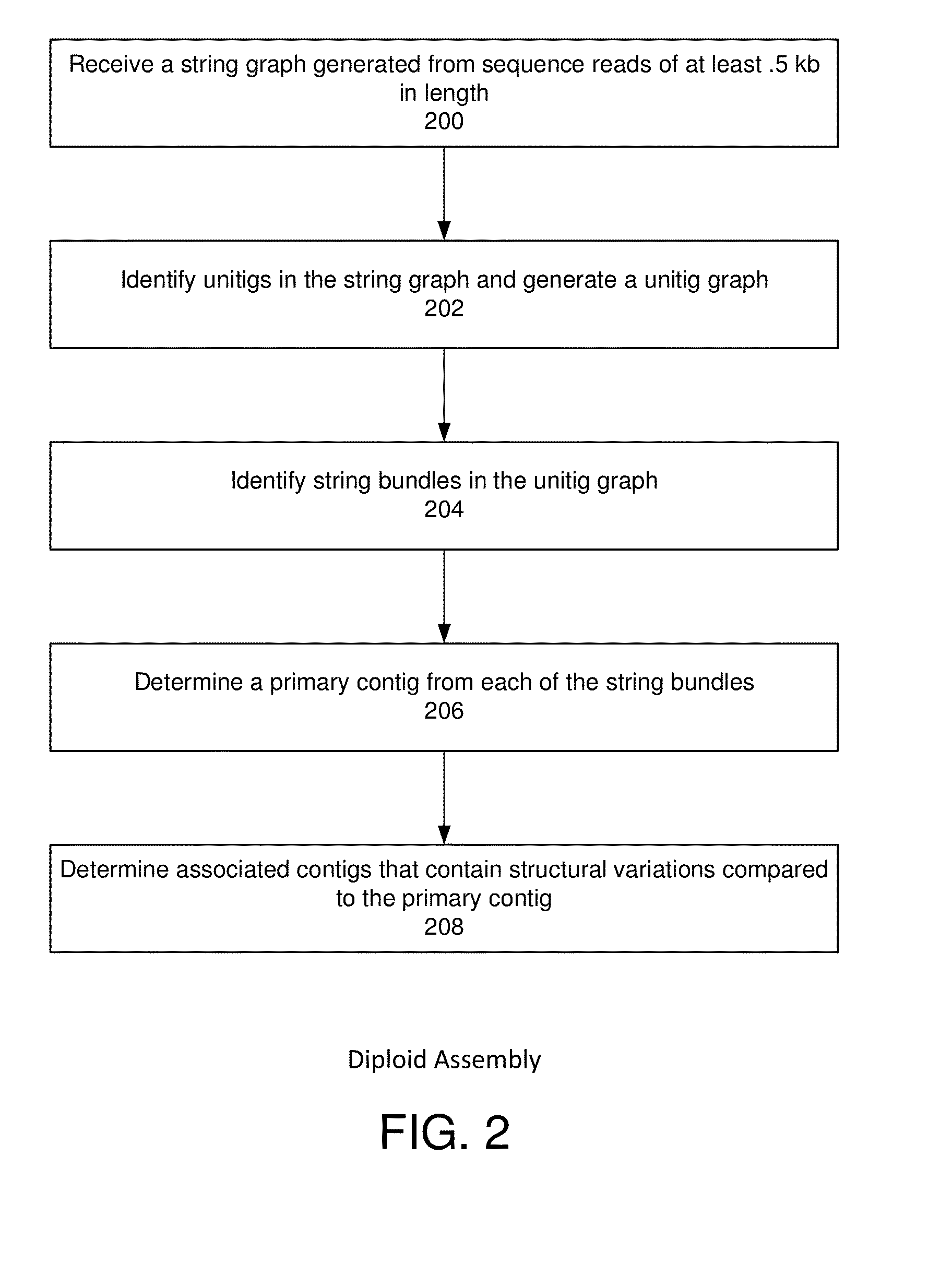String graph assembly for polyploid genomes
a polyploid genome and string graph technology, applied in the field of biomolecule sequence determination, can solve the problems of complex designation of a base-call as a true variant, high cost, and high cost of sequencing data, and achieve the effect of avoiding errors in real-world raw sequencing data, and ensuring the quality of sequence information
- Summary
- Abstract
- Description
- Claims
- Application Information
AI Technical Summary
Benefits of technology
Problems solved by technology
Method used
Image
Examples
example
[0102]The methods described herein were used to perform sequence analysis of the 120 Mb Arabidopsis genome. The strategy comprised generating a “synthetic” diploid dataset by using two inbred strains of Arabidopsis, Ler-0 and Col-0. The two strains were sequenced separately, then sequencing reads generated for each were pooled and subjected to pre-assembly followed by the string graph diploid assembly strategy described herein to determine if this strategy could correctly assemble the two strains from the pooled read data.
[0103]After pre-assembly, the sequence reads used as input in the diploid assembly process ranged from about 10 kb to about 22 kb, with the majority of the reads between 10 and 15 kb. The unitig graph shown in FIG. 10 was constructed from a string graph generated using the pooled sequencing reads. The next step was to find an end-to-end path though the unitig graph along which a string bundle could be built. The compound paths of the string bundle contained sequenc...
PUM
 Login to View More
Login to View More Abstract
Description
Claims
Application Information
 Login to View More
Login to View More - R&D
- Intellectual Property
- Life Sciences
- Materials
- Tech Scout
- Unparalleled Data Quality
- Higher Quality Content
- 60% Fewer Hallucinations
Browse by: Latest US Patents, China's latest patents, Technical Efficacy Thesaurus, Application Domain, Technology Topic, Popular Technical Reports.
© 2025 PatSnap. All rights reserved.Legal|Privacy policy|Modern Slavery Act Transparency Statement|Sitemap|About US| Contact US: help@patsnap.com



